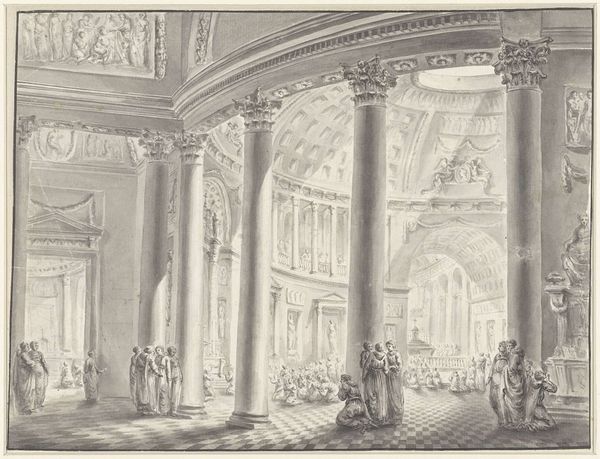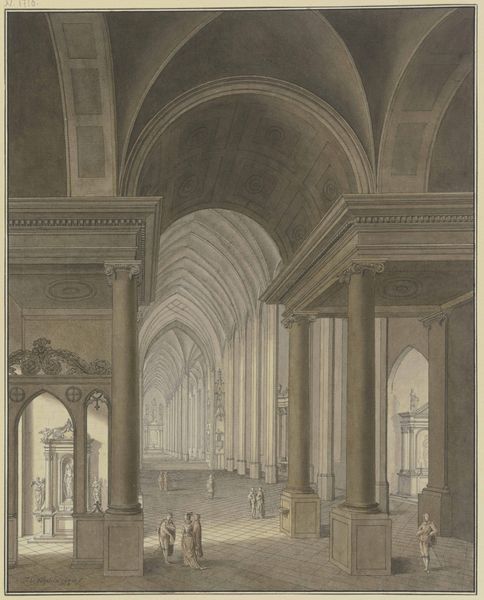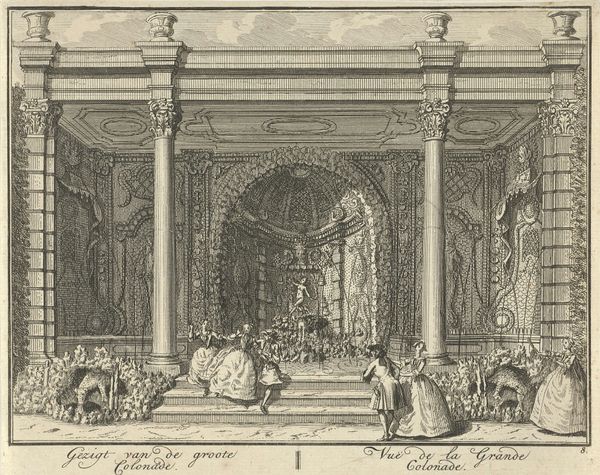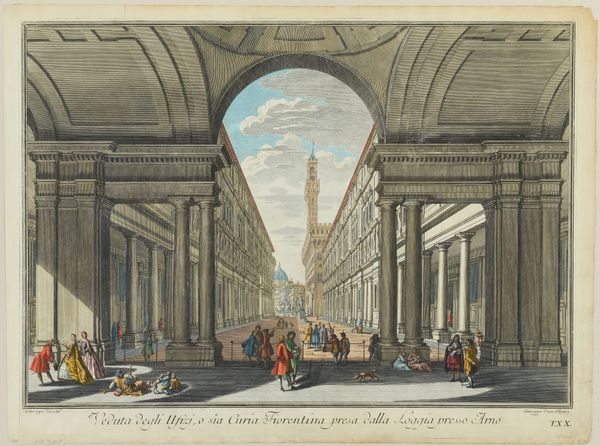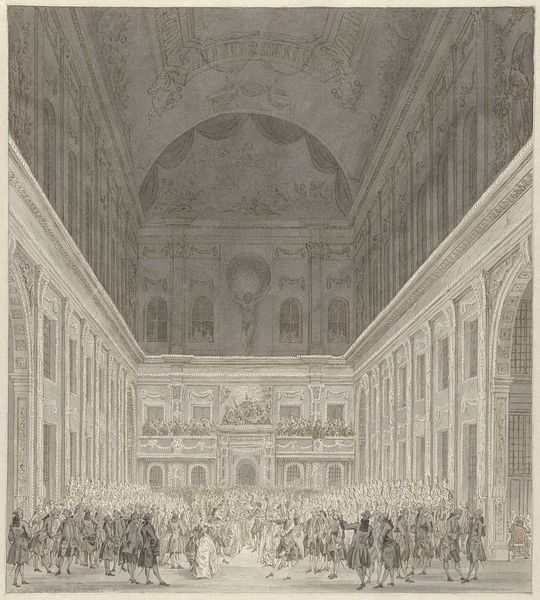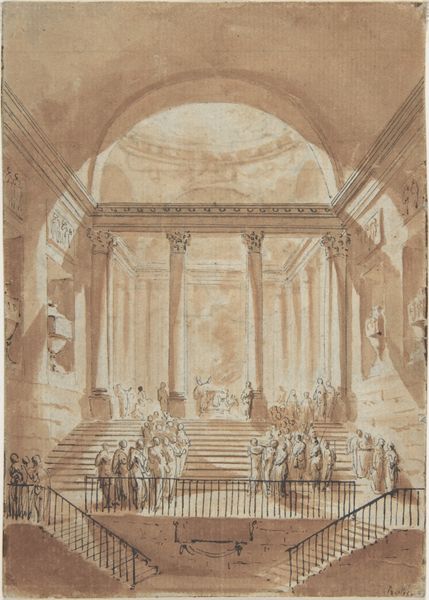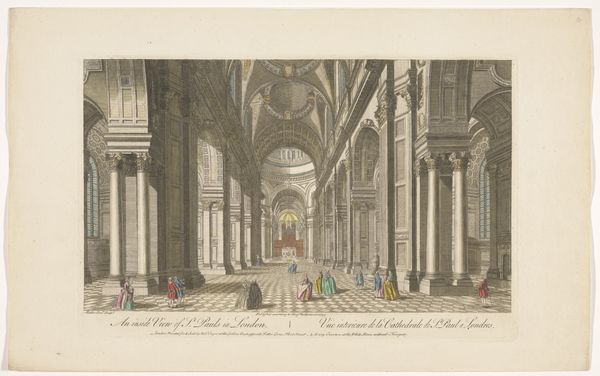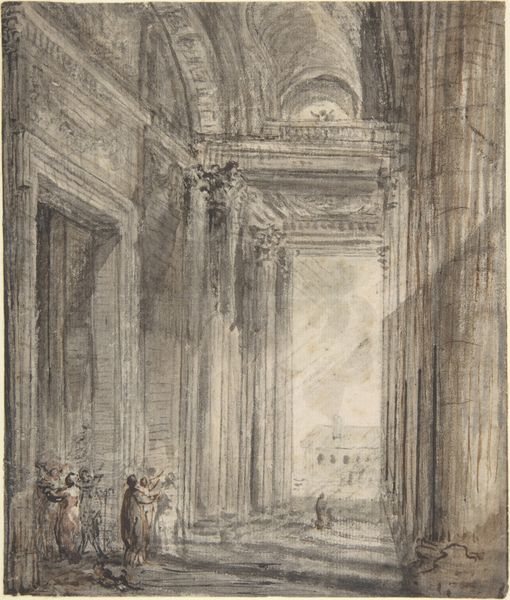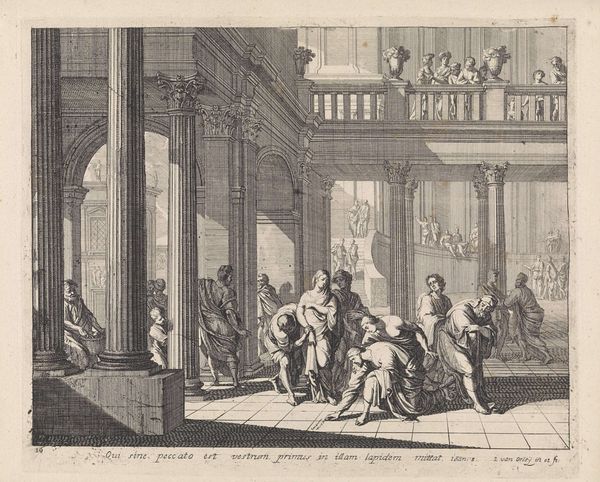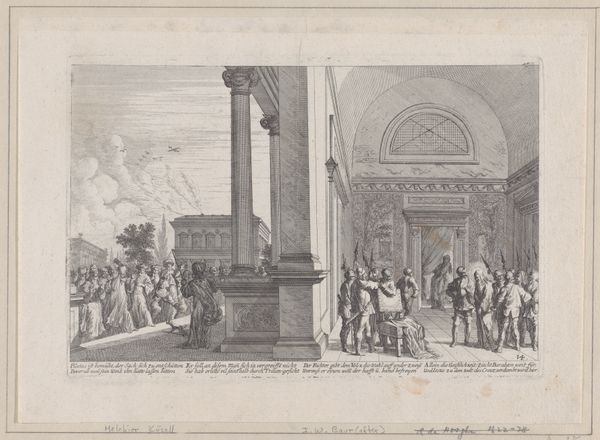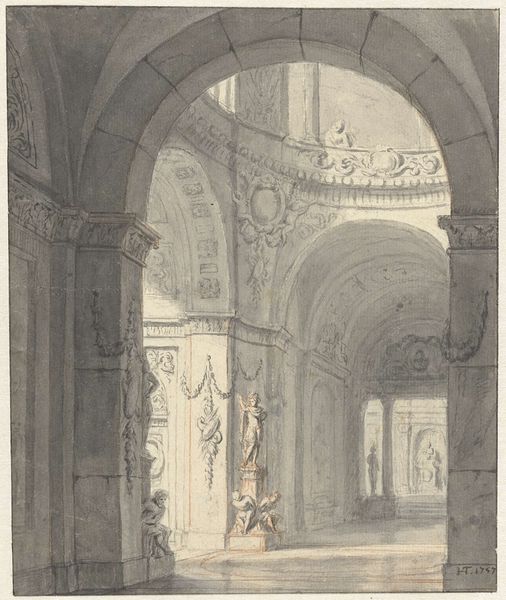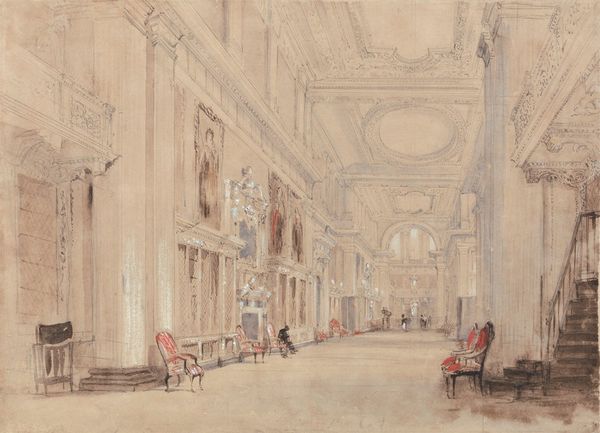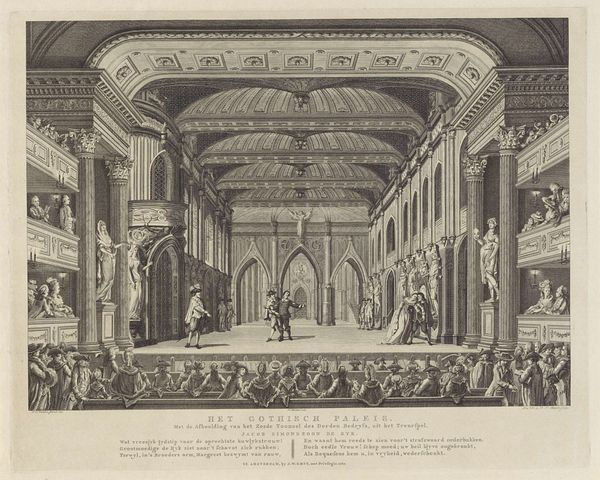
painting, watercolor
#
painting
#
perspective
#
watercolor
#
romanticism
#
architectural drawing
#
genre-painting
#
history-painting
#
watercolor
Dimensions: height 141 mm, width 215 mm
Copyright: Rijks Museum: Open Domain
Curator: Eugène-Louis Lami created this watercolor painting in 1848; it’s entitled "Interieur van de S. Roche te Parijs, met een processie op de voorgrond." Editor: It feels ethereal, almost a dreamscape. The muted colors and soft washes create a sense of piety, but also of distance. The eye is drawn to the light, which itself seems immaterial, a heavenly emission from an unseen source. Curator: Precisely. Note how Lami uses watercolor to define the architectural forms of the Saint Roche church, particularly focusing on perspective. The linear arrangement directs our attention toward that central illumination. Semiotically, the composition elevates the spiritual. Editor: I am thinking of what goes into such a feat. Think of the paper itself – its source, perhaps pulped rags. And the pigments, ground minerals mixed meticulously to catch the play of light and shadow that is not fully possible. The making seems grounded, the effect floating somewhere. What does this contradiction accomplish? Curator: The ethereal quality is key here. The luminous technique combined with architectural depiction heightens a spiritual experience. There is a certain…transcendence of materiality, but with firm perspective guidelines that root the image within concrete place. Editor: Do you think that perhaps such contrast between grounded architectural certainty and divine suggestion captures that yearning so relevant for Romantic painters like Lami? Curator: Yes. We have structure and flow, precision and spontaneity. The historical weight of a processional event and the freedom of a fleeting, personal devotional experience. This artistic dialogue adds richness, wouldn't you agree? Editor: Certainly, examining the processes and the intent, combined with the emotional outcome and material composition, leads to new layers of understanding. Curator: Agreed. It becomes not only an artwork to admire for the skill evident in rendering of place and religious activity, but also, a relic to analyze in considering our human experience with materials, artistry, and divinity.
Comments
No comments
Be the first to comment and join the conversation on the ultimate creative platform.

